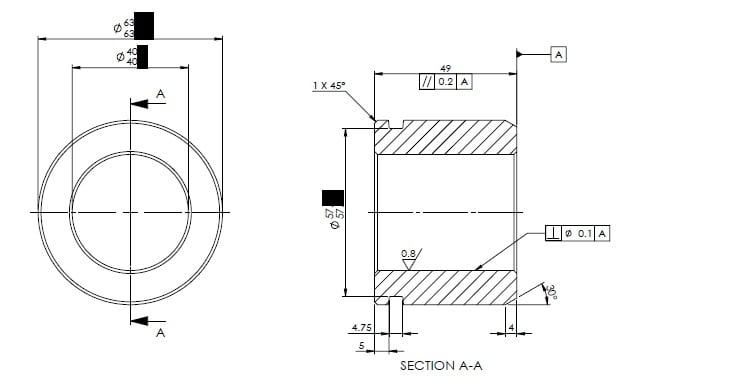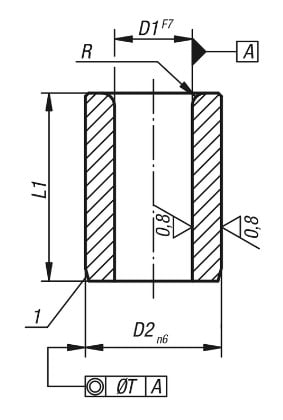Hi
I haven't used Geometric tolerances for a while, so I just wanted to double check I'm not going insane
I stumbled across a drawing (see attached / or below post), and I'm pretty sure the geometric tolerancing is wrong.
1) The parallelism looks to be on a wrong face?
2) Also, personally I would have thought it would have been better to datum A the external of cylinder and put a concentricity on the internal, rather than a perpendicular?
Thanks

I haven't used Geometric tolerances for a while, so I just wanted to double check I'm not going insane
I stumbled across a drawing (see attached / or below post), and I'm pretty sure the geometric tolerancing is wrong.
1) The parallelism looks to be on a wrong face?
2) Also, personally I would have thought it would have been better to datum A the external of cylinder and put a concentricity on the internal, rather than a perpendicular?
Thanks


